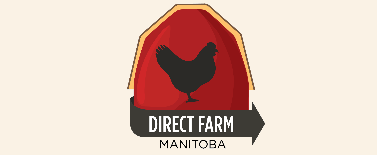At our February [2012, "Solar in the Southeast'] meeting, Donald and Randy Proven gave a well thought out, engaging description of their thinking with regard to energy efficient housing. Gabriel began a discussion with Donald after the adjournment of the meeting, and this discussion continued by e-mail in the week following. Here is that discussion:
Gabriel wrote:
Hi Donald!
this is the website of the guy who built [Tim and Janet's home] near Roseau River that we will visit on march 10:
http://www.econesthomes.com/
So do you think it would work to blow chopped straw instead of cellulose in your houses?
--------------------------------------------------------------------------------
Donald Replied:
Hi Everyone,
Interesting website (Econesthomes.com). I was unable to find any specifics about the actual R value for the "light clay" walls. From our experiences, 12 inches of dense pack cellulose is about R44. 12 inches of muddy straw would probably be less than half that, but let us be generous and say R22. (A more careful search of the site yielded this - "Technically the clay/straw walls themselves provide an R-24 insulation value. We have experienced them to perform at a much higher rate than a frame wall of the same R value would. This is due to the uninterrupted monolithic wall plane and the mass provided by the clay, which helps store heat. " I would say that my estimate still stands. So this is dramatically less than 12 inch cellulose. And we need to be at R 60 at least. Our 12 inch wall sections mass around 60 lbs of cellulose per 2 ft X 8 ft stud cavity. We used 12000 lbs in Evan's house. Thermal Mass.
The light clay is marginally better than a regular 2x6 wall, but not by much, and it must require that the owners burn wood to keep warm? Why burn at all if Solar Thermal could heat the house? I would be curious about the heating load for the house you are going to visit.
In one of the articles the author dismissed all of the building science that has been accumulated here in the cold Manitoba climate. ( "The EcoNest, with its massive, vapor-diffusible walls and natural systems of heating, cooling and ventilating cannot be properly understood in terms of current North American building science theory.") That is a bit disappointing. I think Thorsten Chlupp's discussion about vapour diffusible walls is the most current North American building science. And he recognizes that it must be done using methods that the majority of home builders "could" employ. It is a interesting concept...would I be able to visit the house on the 10th with the group?
Blowing Straw instead of Cellulose
At this time, the idea of chopping and blowing straw in to walls is counterproductive for a number of reasons: 1. The cellulose we use is chopped very fine, allowing the fibres to trap air between them. This is how all insulation functions (excluding vacuum technology). By using a material with longer strands and larger air spaces, you would lose R value and the resistance to air movement that exemplifies cellulose fibres. The straw might be able to be chopped fine like recycled paper. In that case we are back to processing just like cellulose. 2. By using straw, you are removing organic material that should be returned to the soil. There are only two locations in Canada that can sustain "industrial" harvesting of straw. One is here in Manitoba - centred around Elie; that's why the straw board plant was there. The other is in the Saskatchewan black soil zone, I don't remember specifically where. I did a paper on this very topic in a natural resources class at the University of Saskatchewan. So the resource is not as abundant as it first appears. Remember, our goal with housing is widespread deployment to the maximum number of people. At present I do not believe that straw can support this deployment. 3. We already have a superior product available that is making use of a local recycled resource. Until society realizes that we don't need to use all that paper, we need to make use of the resource that would otherwise go to waste in landfills.
Blowing chopped straw in to wall might work, but you would need thicker walls, it would need to be treated to resist mould and bugs just like cellulose and would not be fire resistant. Bale walls are more fire resistant because of how dense the bales are packed.
Re: Straw
Straw is a byproduct of grain production that has been used for centuries. Our soils can no longer break it down fast enough because we've killed off much of the life that was in the soil before industrial agriculture came along. That's why it gets burned. Cellulose fibre insulation is reusing a material that would otherwise be landfilled. That is a key difference. As I indicated above there is a limited amount of land that can sustain industrial straw production. Limited to the point of not really being useful except as a fringe movement. There are literally mega tonnes of paper going to landfills and recyclers. I admit the production of paper is energy intensive, so why would we waste that energy now by switching to straw? Of course other more sustainable sources of cellulose might be found, but why waste all that paper? And if this new source is a primary use, there is an order of magnitude difference in the amount of energy that we are recycling. Think of it as storing energy in your walls.
So despite how industrial agriculture "wastes" straw, we really do need to put the nutrients it contains back in the ground.
If you get a chance, look at Thorsten's presentation about building in a cold climate. It is long and a bit dry, but he is using real data and real science to guide his home building methods.
http://www.youtube.com/watch?v=AtHkvpRI6fc
I guess I'm back to this - We are looking for the easiest, quickest method to reduce our current energy footprint with our houses. Insulating with cellulose would currently appear to be an easily deployable method.
Regards
--------------------------------------------------------------------------------
Gabriel wrote:
Thanks for feed back. Friends of mine might contact you for consultation: Lionel and Murielle Colette. Has Energy Returned on Energy Invested - EROEI tested shortly cut straw? To use instead of cellulose? the reason i am interested is that straw is an abundant local natural product that wouldn't need the energy cellulose needs...trees take long time to grow. straw : one year. wood needs to be cut, transport to the paper mill, transformed into paper, transported to printer, transported to reader, transported to recycling/transforming facilities, transported to builder. Also, is there enough paper to recycle to produce enough insulation for a massive conversion movement?
The older straw house I know of in Manitoba is 5 min. walk from my place and is about 14 yo:
http://preimer.srss.ca/bales.html
I think there is a way to avoid timber framing in straw bale construction: http://www.greb.ca/GREB/La_technique_du_GREB.html
I have worked on both projects.
Really appreciate your research and passion. We need more peoples like you!
--------------------------------------------------------------------------------
In another email Gabriel wrote:
Interesting straw bale construction technique that might increase considerably the insulation uniformity since the strings are cut and the ball pressure is released and fills gaps up around it...bigger bales could be made.
see : http://www.habitatvegetal.com/fr/construire-en-paille/theorieYouTube
--------------------------------------------------------------------------------
Donald replied,
Hi All,
I understand the attraction to straw bale construction. Everyone, in theory, can participate and build their own home. It is made of readily available straw and plaster or concrete stucco. It sounds sustainable. Back in the early 1990's we investigated the technology. Randy built his chicken coop. We helped to construct a small straw bale demonstration house at the U of M in 1994. We were the only people there with any home building experience. We pre-tensioned the bale walls with threaded rod and cut the strings, just like this copyrighted CUT system. It was interesting.
As we learned of the origins and evolution of the technology we developed some concerns. Firstly, here in Manitoba, if building under the Code, you couldn't build a load bearing straw wall. Maybe you can now? That means framing - either timber frame or truss to support the roof or second floor. Timber framing requires large mature trees to be cut down plus requires some advanced skills. Regular construction makes use of smaller, second growth forests and is easy to build. We also have concerns about the base of the exterior wall. We know the wall has drying potential. On the north side of a wall this potential is greatly reduced. We would like to know about the state of the straw on the north side of a 20 year old home here in Manitoba. Maybe if the house is leaky enough moisture in the walls is of no concern as it leaks out around windows and doors?
Anyway, I can see I'm sounding a bit negative. Our goal is to have as many people as possible have access to a house that doesn't require burning something to stay warm. The only way to do that is to insulate the house until heat loss is reduced to the point where you can add solar thermal and PV. This is not a sales pitch or a lecture. It is simple physics. So the "light clay" walls of the Econest houses would have to be 2 or 3 times as thick to achieve equivalent insulation levels as cellulose. You would need 24" bales to reach R 60 at least. It could be done. We believe that the easiest way for lots of houses to achieve high insulation levels is with traditional framing, cellulose and the Remote Wall concept. And for retrofit applications, when judged by Energy Returned on Energy Invested - EROEI, cellulose wins time and again.
As you can tell, I get a bit excited talking about housing and construction.
Regards,
Donald Proven
 Friday, December 2, 2016 at 12:26PM
Friday, December 2, 2016 at 12:26PM Gary Martens, retired U of M professor of Plant Sciences endeavoured to build an ultra-efficient small house on his acreage in Kleefeld, MB. The result has been a careful deliberation and design process, culminating in a small house that stands in stark contrast to the large and inefficient new homes of today. Have a look at his costs and plans! You can view Gary's energy production live


